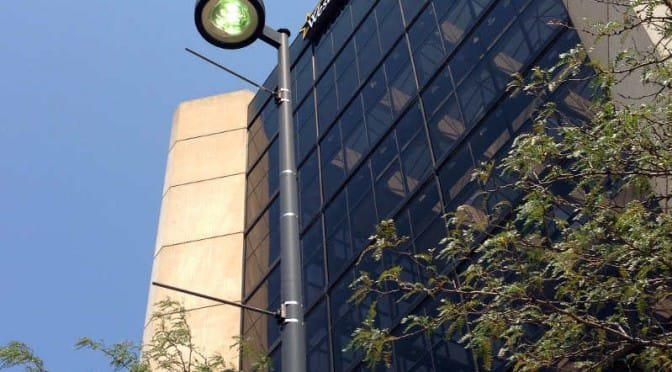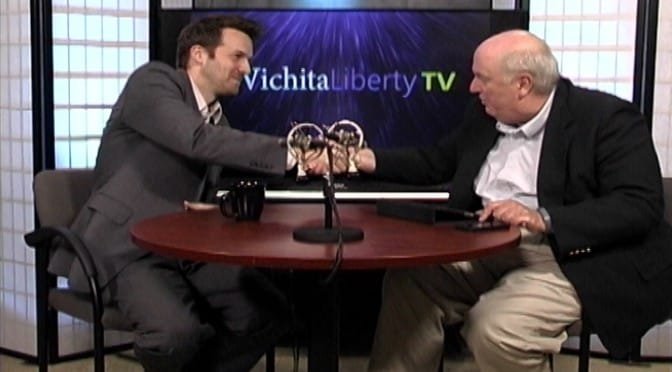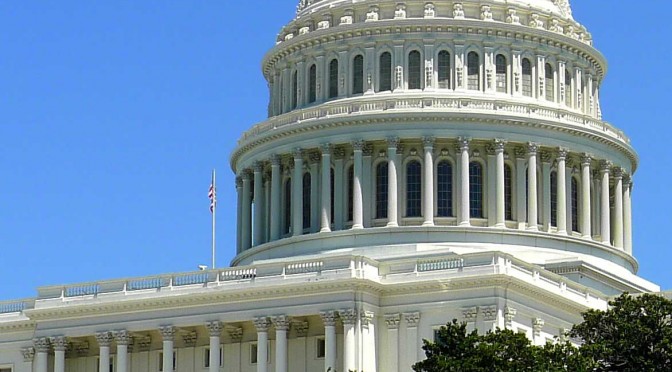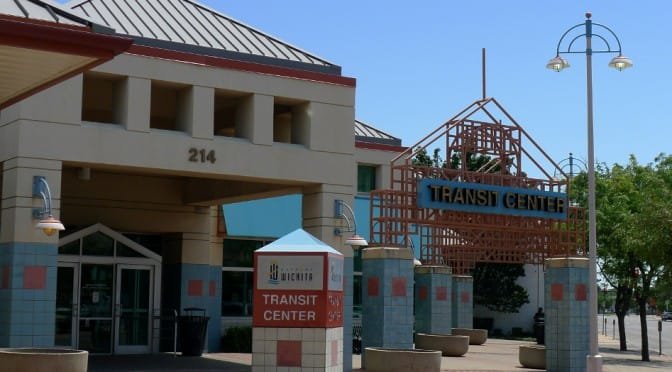When the city of Wichita is not concerned about waste that is easily observed, how careful is it about avoiding waste not easily seen by citizens?
Last Friday afternoon the parking lot lights Wichita Transit Center where switched on, as they often are during the day.

But I didn’t have to travel much farther before I saw street lights turned on for several blocks on Douglas, Broadway, and Topeka. This is not unusual.
Waste like this is unacceptable. The city council is likely to recommend that Wichitans vote for higher sales taxes as the city can’t afford to run the buses or adequately maintain streets. Before asking for higher taxes, the city should stop wasteful spending on burning street lights in the middle of the day.
You have to wonder: If the city is, apparently, not concerned about blatant waste like this — waste that anyone can easily observe — what is it doing about waste that can’t easily be seen?

But street lights burning in the middle the day: This wastes a lot of power.
Before considering any extra funding for the city, let’s ask that it stop wasteful spending like these lights. Even better, before sending any funding, let’s stop this waste.
I realize that the lights illustrated in these photographs are, undoubtedly, a small portion of the city’s spending. But you don’t have to look very hard to find waste like this, and we know that small examples of waste are multiplied many times. So when city leaders tell us that there is nowhere left to cut in the budget, that everything that can be done to trim the fat has already been done, and that the only thing we can do is raise taxes — well, think of this photograph and others illustrated in Waste in Wichita, the seen and probably unseen, Wichita’s monsters on display, again, Forget the vampires. Let’s tackle the real monsters, Wichita advances in the field of cost savings, Another Friday lunch, and even more lights are on, To compensate, Wichita switched on the street lights, In Wichita, the streetside seating is illuminated very well, In Wichita, the rooftops are well-lit and On a sunny day in downtown Wichita you can see the street lights.
This is not to say that waste like this does not occur in the private sector. Of course it does. But businesses and individuals have a powerful incentive to avoid waste that isn’t present in government: Businesses and people are spending their own money. And even if they waste money, it’s their money, not ours.






 In this episode of Voice for Liberty Radio: Candidates for Republican party nomination for Kansas Secretary of State spoke at the Wichita Pachyderm Club on July 18, 2014. The candidates are incumbent Kris Kobach and challenger Scott Morgan. The issue of voting, particularly the requirement for proof of citizenship when registering to vote, is an issue that separates the two candidates.
In this episode of Voice for Liberty Radio: Candidates for Republican party nomination for Kansas Secretary of State spoke at the Wichita Pachyderm Club on July 18, 2014. The candidates are incumbent Kris Kobach and challenger Scott Morgan. The issue of voting, particularly the requirement for proof of citizenship when registering to vote, is an issue that separates the two candidates.




 The evaluation of economic development incentives requires thinking at the margin, not the entirety.
The evaluation of economic development incentives requires thinking at the margin, not the entirety. 



